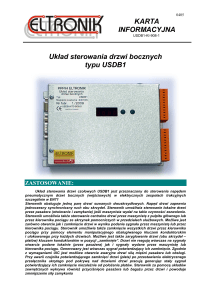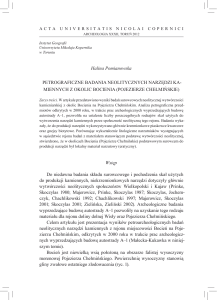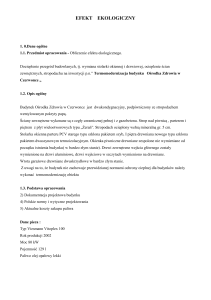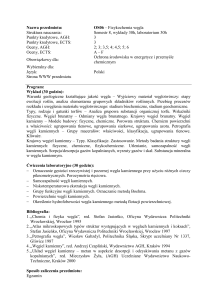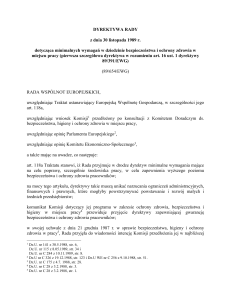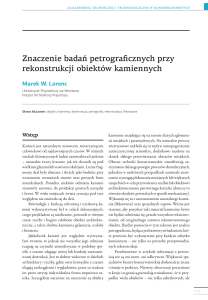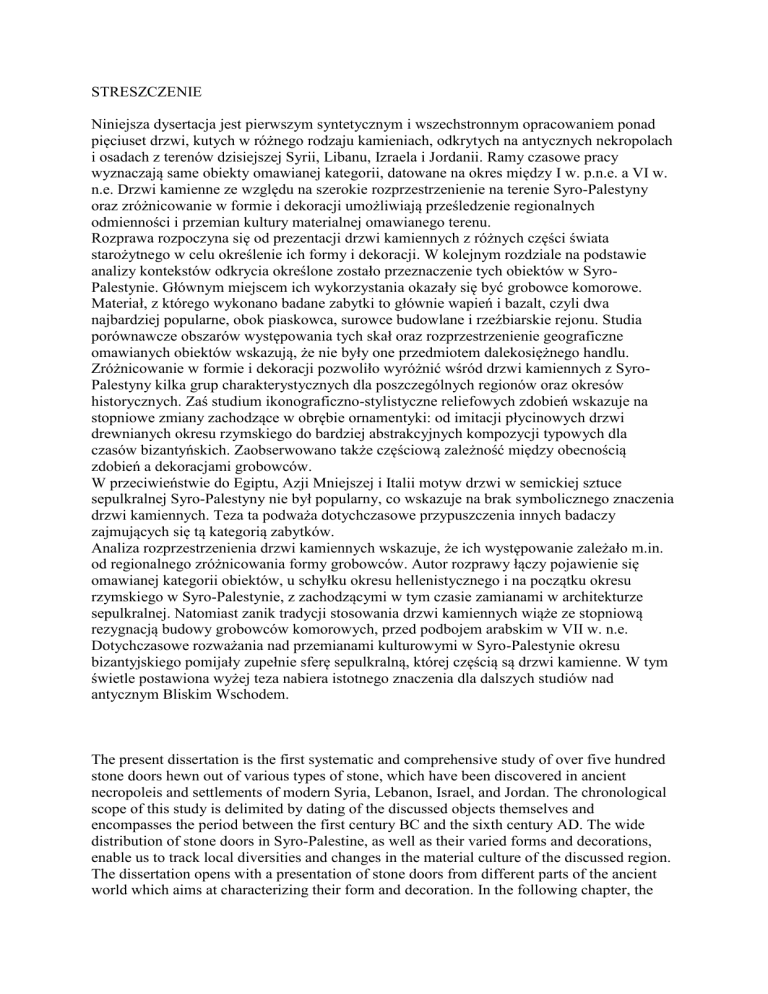
STRESZCZENIE
Niniejsza dysertacja jest pierwszym syntetycznym i wszechstronnym opracowaniem ponad
pięciuset drzwi, kutych w różnego rodzaju kamieniach, odkrytych na antycznych nekropolach
i osadach z terenów dzisiejszej Syrii, Libanu, Izraela i Jordanii. Ramy czasowe pracy
wyznaczają same obiekty omawianej kategorii, datowane na okres między I w. p.n.e. a VI w.
n.e. Drzwi kamienne ze względu na szerokie rozprzestrzenienie na terenie Syro-Palestyny
oraz zróżnicowanie w formie i dekoracji umożliwiają prześledzenie regionalnych
odmienności i przemian kultury materialnej omawianego terenu.
Rozprawa rozpoczyna się od prezentacji drzwi kamiennych z różnych części świata
starożytnego w celu określenie ich formy i dekoracji. W kolejnym rozdziale na podstawie
analizy kontekstów odkrycia określone zostało przeznaczenie tych obiektów w SyroPalestynie. Głównym miejscem ich wykorzystania okazały się być grobowce komorowe.
Materiał, z którego wykonano badane zabytki to głównie wapień i bazalt, czyli dwa
najbardziej popularne, obok piaskowca, surowce budowlane i rzeźbiarskie rejonu. Studia
porównawcze obszarów występowania tych skał oraz rozprzestrzenienie geograficzne
omawianych obiektów wskazują, że nie były one przedmiotem dalekosiężnego handlu.
Zróżnicowanie w formie i dekoracji pozwoliło wyróżnić wśród drzwi kamiennych z SyroPalestyny kilka grup charakterystycznych dla poszczególnych regionów oraz okresów
historycznych. Zaś studium ikonograficzno-stylistyczne reliefowych zdobień wskazuje na
stopniowe zmiany zachodzące w obrębie ornamentyki: od imitacji płycinowych drzwi
drewnianych okresu rzymskiego do bardziej abstrakcyjnych kompozycji typowych dla
czasów bizantyńskich. Zaobserwowano także częściową zależność między obecnością
zdobień a dekoracjami grobowców.
W przeciwieństwie do Egiptu, Azji Mniejszej i Italii motyw drzwi w semickiej sztuce
sepulkralnej Syro-Palestyny nie był popularny, co wskazuje na brak symbolicznego znaczenia
drzwi kamiennych. Teza ta podważa dotychczasowe przypuszczenia innych badaczy
zajmujących się tą kategorią zabytków.
Analiza rozprzestrzenienia drzwi kamiennych wskazuje, że ich występowanie zależało m.in.
od regionalnego zróżnicowania formy grobowców. Autor rozprawy łączy pojawienie się
omawianej kategorii obiektów, u schyłku okresu hellenistycznego i na początku okresu
rzymskiego w Syro-Palestynie, z zachodzącymi w tym czasie zamianami w architekturze
sepulkralnej. Natomiast zanik tradycji stosowania drzwi kamiennych wiąże ze stopniową
rezygnacją budowy grobowców komorowych, przed podbojem arabskim w VII w. n.e.
Dotychczasowe rozważania nad przemianami kulturowymi w Syro-Palestynie okresu
bizantyjskiego pomijały zupełnie sferę sepulkralną, której częścią są drzwi kamienne. W tym
świetle postawiona wyżej teza nabiera istotnego znaczenia dla dalszych studiów nad
antycznym Bliskim Wschodem.
The present dissertation is the first systematic and comprehensive study of over five hundred
stone doors hewn out of various types of stone, which have been discovered in ancient
necropoleis and settlements of modern Syria, Lebanon, Israel, and Jordan. The chronological
scope of this study is delimited by dating of the discussed objects themselves and
encompasses the period between the first century BC and the sixth century AD. The wide
distribution of stone doors in Syro-Palestine, as well as their varied forms and decorations,
enable us to track local diversities and changes in the material culture of the discussed region.
The dissertation opens with a presentation of stone doors from different parts of the ancient
world which aims at characterizing their form and decoration. In the following chapter, the
function of such objects in Syro-Palestine is determined based on the analysis of their
discovery contexts. It turned out that chamber tombs were the places where stone door were
mainly used. The investigated objects were made chiefly from limestone and basalt—the two
most popular building and sculpting materials of the region beside sandstone. Comparative
studies of the areas of distribution of these two materials and the geographical distribution of
the discussed objects indicate that they were not traded over long distances.
Thanks to variety of forms and decorations, it is possible to distinguish among the stone doors
from Syro-Palestine a number of groups characteristic for particular regions and periods. The
iconographic and stylistic studies, on the other hand, point to gradual changes in the
ornamentation: from imitations of wooden panel doors of the Roman period to more abstract
compositions typical of the Byzantine times. It was also observed that the presence of
ornaments and decorations of tomb were to a certain extent interrelated.
The motif of door was not popular in Semitic sepulchral art of Syro-Palestine, in contrast to
what we observe in Egypt, Asia Minor, and Italy; this points to the absence of symbolic
meaning of stone doors. This hypothesis calls into question the suppositions of other scholars
investigating this category of objects that have been put forward until now.
While analyzing the distribution of the stone doors one notices that among other factors it
depended on regional diversity of the forms of tombs. The author of the dissertation connects
the appearance of the discussed category of objects in the end of the Hellenistic period and the
beginning of the Roman period in Syro-Palestine with the contemporary changes in sepulchral
architecture. On the other hand, he links the disappearance of the tradition of making the stone
doors with the gradual abandonment of the construction of chamber tombs prior to the Arab
conquest in the seventh century AD. The previous studies on cultural changes in SyroPalestine in the Byzantine period disregarded completely the sepulchral architecture to which
the stone doors belong. Consequently, the observation presented above gains importance for
further studies of the ancient Near East.



